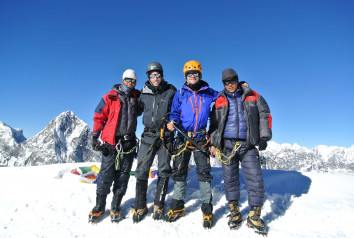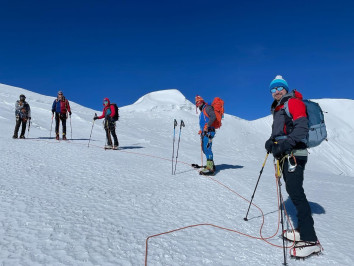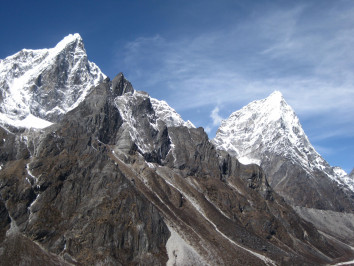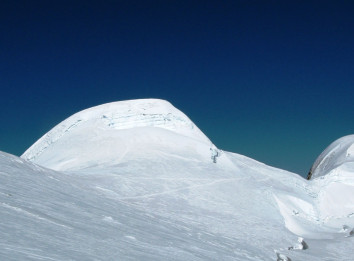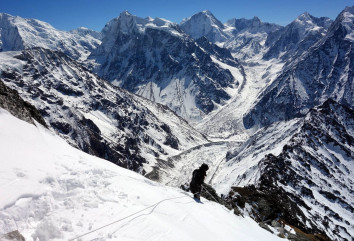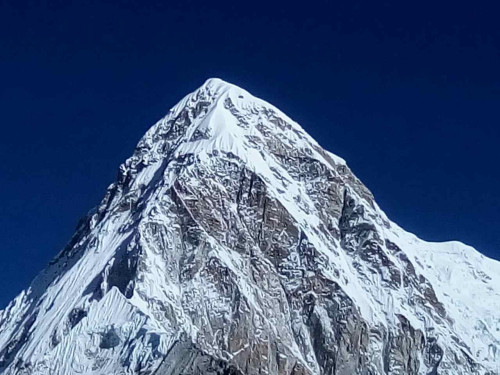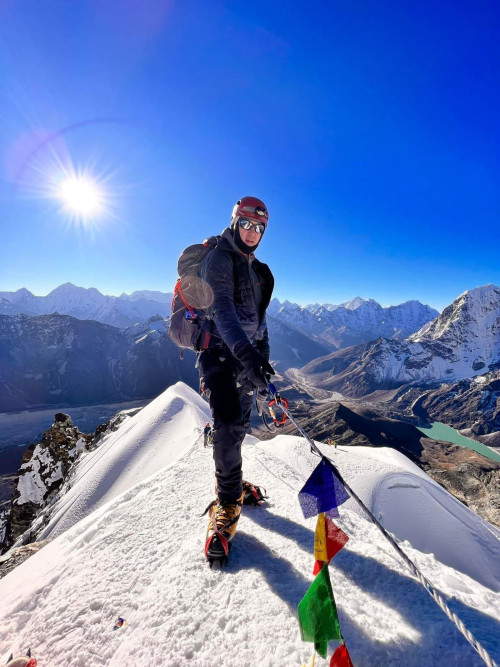Trip Highlights- Saribung Peak Climbing
-
Awe-inspiring view of Himlung Himal at 7,126 metres, Annapurna II at 7,937 metres, Manaslu at 8,156 metres, Nilgiri at 7,061 metres.
- The ideal mountain above 6,000 metres to excel in mountaineering climbing skills.
- Alpine PD graded peak best for aspiring climbers to gain climbing experience.
- Trekking to Lo Manthang which was once a forbidden kingdom of Nepal.
- Hiking through the beautiful Nar-Phu village of Upper Mustang.
- Visiting the centuries-old caves and monasteries at Upper Mustang.
- Sightseeing at Muktinath Temple, a revered Hindu pilgrim site.
- Hike along the deepest Budi Gandaki gorge in Jomsom and Kagbeni.
- Apple orchards at Jomsom and popular brandy "Marpha".
- Scenic flight from Pokhara to Jomsom.
Saribung Peak Climbing - Trip Overview
Annapurna region in the midWest of Nepal is a wonder of nature. Among such wonders, Saribung Peak, at 6,328 metres, stands tall and attracts aspiring climbers every year. Located on Upper Mustang, this peak is a newly discovered climbing location.
Northeast to the Lo Manthang, Saribung Peak sits at the border of Tibet and Nepal. The preserved Tibetan lifestyle of the people of Lo and the flat Tibetan plateau gives the experience of off-beaten regions. Lo Manthang was once a forbidden kingdom of Tibet. This place later became part of Nepal, and since then it has been a beautiful place for trekking and climbing. Permitted for trekking in 1993, climbing of Saribung Peak and other peaks here only started after 2006. This place is only accessible with permits, and once they expire, you have to either renew them or leave the Lo Manthang.
Saribung Peak rises between the Nar Phu valley and Damodar Kunda near Damodar Himal. The summit of Saribung Peak is an ideal place for spectacular viewing of the Annapurna ranges and other 7,000-metre peaks. Himlung at 7,126 metres, Nilgiri at 7,061 metres, and Annapurna II at 7,937 metres are best when viewed from the summit. Also, Manaslu at 8,156 metres looks spectacular on a clear day when viewed from the summit of Saribung Peak. Further, the panoramic view of the elegance of Nar Phu Valley and Lo Manthang is best from the peak.
On top, we'll trek to Lo Manthang first, where you'll see the remains of the once-forbidden Kingdom of Lo. Even the local people here hail their former king like they used to. Other places like Luri Cave monastery and Ghuma are worth the visit. For most, reaching Saribung Peak base camp is challenging. For the climbers who make it to the top, the reward of climbing is the spectacular view of all the prominent mountains.
Saribung Peak Climbing - Itinerary Overview
The 25 days of adventure-filled Saribung Peak climbing expedition begins with a scenic flight to Pokhara. From Pokhara, we'll take another flight to Jomsom, the heaven of the Annapurna Region. You'll witness the greatness of Kali Gandaki Gorge, the luring beauty of Kagbeni, and the arid landscapes around.
From Kagbeni, we'll hike to Lo Manthang first via the traditional Caravan Route. We'll trek for six days via Chele, Syangboche, Ghami, Tsarang, and beautiful Lo Manthang.
En route to Saribung Peak climbing, we'll see the greatness of Tilicho Peak, Nilgiri mountains, and several other peaks.
We'll also tour the ancient city of Lo Manthang and the lifestyle of the Tibetan people of Lo. The centuries-old Namgyal Gompa, ruined forts, and Lo Palace.
After a day of acclimatising at Lo Manthang, we'll continue hiking to Yara, Luri Cave, Ghuma Thanti, Namta Khola, and Saribung Peak base camp. The trekking route to Saribung Peak between Damodar Kunda and Lo Manthang is challenging. We'll have to cross some high passes filled with rocks, snow, and ice while crossing this section. The rest of the trails are moderate grade.
At Saribung Peak base camp, we'll stay in a tented style overnight. The next day will be a training day delivered by our climbing guides. They will train you on using crampons, ice axe, and rope skills for walking on a fixed-line. Even though this peak is PD graded, some portions near the summit are steep and require technical skills to cross. Other than that, your physical endurance becomes the key.
We'll first hike to Saribung Peak Camp I from base camp. The next day, we'll go for a summit push in the early morning. It would be a 9 hours long hike to the summit and return to Saribung Peak base camp. From the Saribung Peak summit, you'll get awe-inspiring views of the Annapurna range, Damodar Peak, Tilicho Peak, Himlung, Manaslu, and other prominent peaks.
We'll retrace back to the route to Nar Phu valley. From here, we'll further descend to Meta, Koto, and Besisahar. From Besisahar, we'll drive to Kathmandu.
Saribung Peak Climbing - Accommodation
You'll get tea house-based accommodation throughout the Saribung Peak climbing expedition. At Saribung base camp, you'll stay in tented-style accommodation where our chefs prepare meals. The overnight rest would be enough to soothe your tired legs. The food menu includes noodles, spaghetti, momos, Nepali Dal Bhat, etc. We recommend carrying chocolate bars and pickles for your taste and instant energy.
We'll provide sleeping bags for you overnight at base camp tents. Here, you'll have to accommodate on a twin-sharing basis.
While in Kathmandu, you can stay at a Three Star hotel for luxury services.
Saribung Peak Climbing - Physical Fitness and Difficulties
Classified as PD alpine grade, Saribung Peak is best for intermediate climbers. Also, with proper climbing training, this peak is the best introductory peak for amateur climbers.
But, besides the semi-technical part, climbing this peak requires endurance. The trek to Saribung Base Camp takes 14 days. Thus, you must be in the best physical condition to hike each day for at least 6 hours. Also, the summit day is 8 hours long, which is tiring. Thus, you must train in cardio exercises, mini-marathons, and hiking for two months before this expedition.
Some ridges below the summit and the section between Damodar lake and Lo Manthang are icy. Here, you have to pass some high Passes. Thus, physical fitness is a must for these sections.
Why World Expedition Nepal for Saribung Peak Climbing?
World Expedition Nepal focuses on and promotes peak climbing and expeditions in Nepal. We have been providing tour services since 2017 by registered and licensed under Nepal Government. In the Annapurna region, we'll make sure that you'll have complete joy alongside the adventure of high-altitude climbing.
Our professional and experienced guides will ensure your utmost comfort and safety on Saribung Peak climbing. We'll make this tour an unforgettable experience for you. Also, the health and safety of our clients is our primary motto. Our guides for these expeditions have mountain skills certification. They come with expertise in mountain medicine, first aid, and rescue operations.

 Recommended On
Recommended On
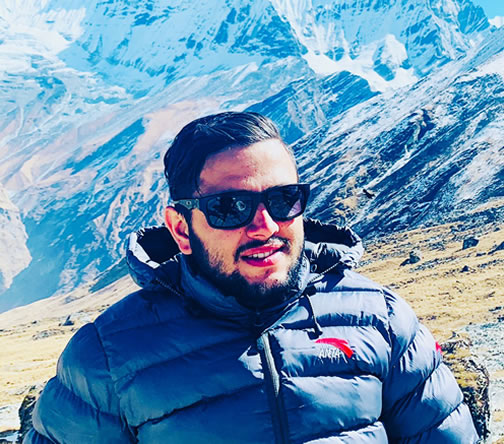



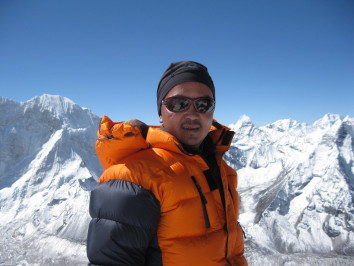
 6000m Peak Climbing , Nepal
6000m Peak Climbing , Nepal  29 Days
29 Days  US$3400
US$3400



-1.JPG)
